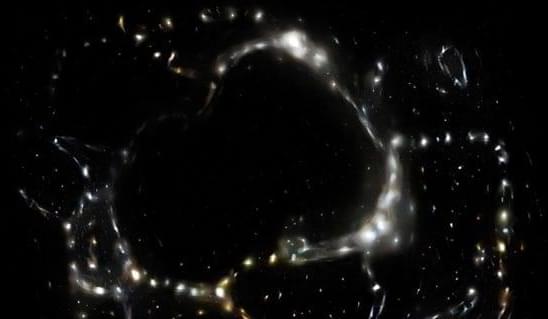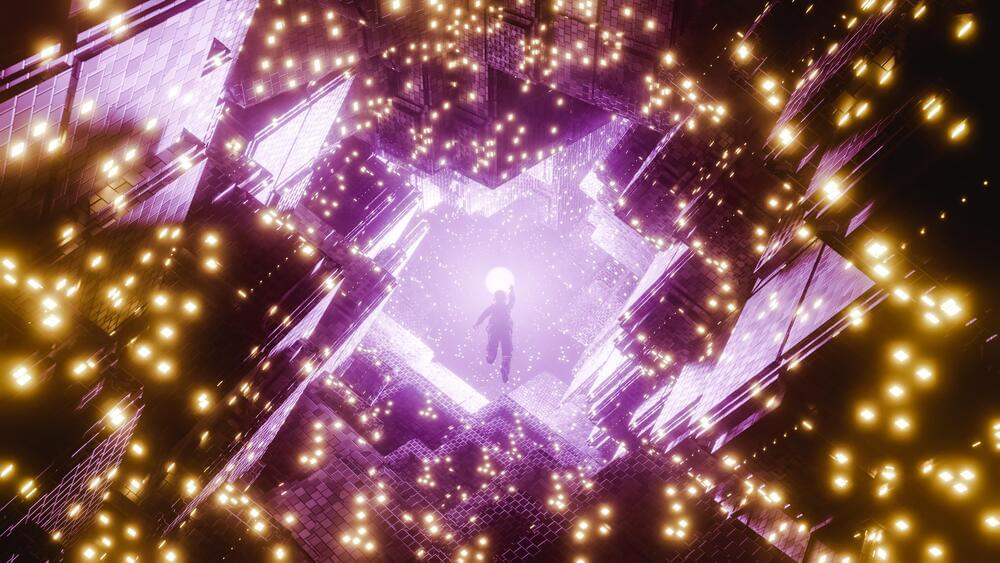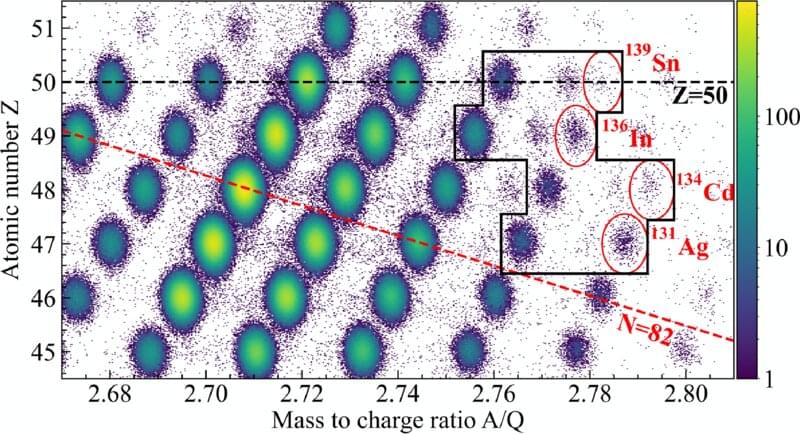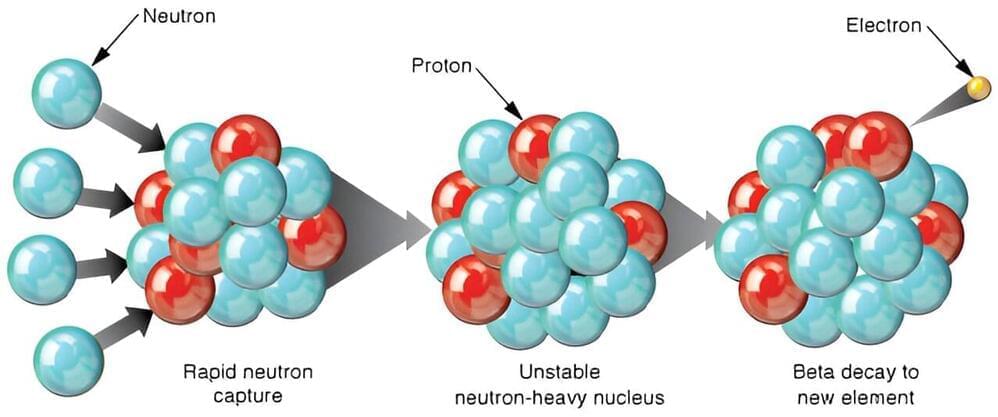If this gigantic cosmic void does exist, it could help astronomers solve one of the greatest mysteries of our universe.



Tiny, fuzzy blobs. I’ve spent a lot of time in the last few years looking at images of tiny, fuzzy blobs. They’re only ever a few pixels wide, like smudges on a photo, but they could be the key that unlocks the mystery of dark matter.
The blobs are galaxies: swirling pools of stars and planets suspended in space, millions of light-years away from Earth. The images were collected by an advanced camera with a 1m (3.3ft) lens mounted on the giant Victor M Blanco Telescope, 2,200m (7,200ft) up in the mountains of the Coquimbo Region of Chile.

Andrea Gallo Rosso, Stockholm University A ghost is haunting our universe. This has been known in astronomy and cosmology for decades. Observations suggest that about 85% of all the matter in the universe is mysterious and invisible. These two qualities are reflected in its name: dark matter. Several experiments have aimed to unveil what it’s made of, but despite decades of searching, scientists have come up short. Now our new experiment, under construction at Yale University in the US, is offering a new tactic.


Models for how heavy elements are produced within stars have become more accurate thanks to measurements by RIKEN nuclear physicists of the probabilities that 20 neutron-rich nuclei will shed neutrons.
Stars generate energy by fusing the nuclei of light elements—first hydrogen nuclei and then progressively heavier nuclei, as the hydrogen and other lighter elements are sequentially consumed. But this process can only produce the first 26 elements up to iron.
Another process, known as rapid neutron capture, is thought to produce nuclei that are heavier than iron. As its name suggests, this process involves nuclei becoming larger by rapidly snatching up stray neutrons. It requires extremely high densities of neutrons and is thus thought to occur mainly during events such as mergers of neutron stars and supernova explosions.

The first stars of the universe were monstrous beasts. Comprised only of hydrogen and helium, they could be 300 times more massive than the sun. Within them, the first of the heavier elements were formed, then cast off into the cosmos at the end of their short lives. They were the seeds of all the stars and planets we see today. A new study published in Science suggests these ancient progenitors created more than just the natural elements.
Except for hydrogen, helium, and a few traces of other light elements, all of the atoms we see around us were created through astrophysical processes, such as supernovae, collisions of neutron stars, and high-energy particle collisions. Together they created heavier elements up to Uranium-238, which is the heaviest naturally occurring element. Uranium is formed in supernova and neutron star collisions through what is known as the r-process, where neutrons are rapidly captured by atomic nuclei to become a heavier element. The r-process is complex, and there is still much we don’t understand about just how it occurs, or what its upper mass-limit might be. This new study, however, suggests that the r-process in the very first stars could have produced much heavier elements with atomic masses greater than 260.
The team looked at 42 stars in the Milky Way for which the elemental composition is well understood. Rather than simply looking for the presence of heavier elements, they looked at the relative abundances of elements across all the stars. They found that the abundance of some elements such as silver and rhodium doesn’t agree with the predicted abundance from known r-process nucleosynthesis. The data suggests that these elements are the decay remnants from much heavier nuclei of more than 260 atomic mass units.

In a new study recently published by Science Advances, Michigan State University researchers reveal an unexpected genetic revelation about the sugars found in “tomato tar,” shedding light on plant defense mechanisms and their potential applications in pest control.
Tomato tar, a familiar nuisance of avid gardeners, is the sticky, gold-black substance that clings to hands after touching the plant. It turns out that the characteristic stickiness of the substance serves an important purpose. It’s made of a type of sugar called acylsugar that acts as a natural flypaper for would-be pests. “Plants have evolved to make so many amazing poisons and other biologically active compounds,” said Michigan State researcher Robert Last, leader of the study. The Last lab specializes in acylsugars and the tiny, hair-like structures where they’re produced and stored, known as trichomes.
In a surprising discovery, researchers have found acylsugars, once thought to be found exclusively in trichomes, in tomato roots as well. This finding is a genetic enigma that raises as many questions as it does insights.

New observations reveal that X-ray emissions from the Cloverleaf odd radio circle are linked to merging galaxy groups, offering new insights into these mysterious cosmic structures.
Astronomers have discovered enormous circular radio features of unknown origin around some galaxies. Now, new observations of one dubbed the Cloverleaf suggest it was created by clashing groups of galaxies.
Studying these structures, collectively called ORCs (odd radio circles), in a different kind of light offered scientists a chance to probe everything from supersonic shock waves to black hole behavior.

Scientists believe the environment immediately surrounding a black hole is tumultuous, featuring hot magnetized gas that spirals in a disk at tremendous speeds and temperatures. Astronomical observations show that within such a disk, mysterious flares occur up to several times a day, temporarily brightening and then fading away.
Now a team led by Caltech scientists has used telescope data and an artificial intelligence (AI) computer-vision technique to recover the first three-dimensional video showing what such flares could look like around SagittariusA* (Sgr A• the supermassive black hole at the heart of our own Milky Way galaxy.
The 3D flare structure features two bright, compact features located about 75 million kilometers (or half the distance between Earth and the sun) from the center of the black hole. It is based on data collected by the Atacama Large Millimeter Array (ALMA) in Chile over a period of 100 minutes directly after an eruption seen in Xray data on April 11, 2017.
A colossal structure in the distant Universe is defying our understanding of how the Universe evolved.
In light that has traveled for 6.9 billion years to reach us, astronomers have found a giant, almost perfect ring of galaxies, some 1.3 billion light-years in diameter. It doesn’t match any known structure or formation mechanism.
The Big Ring, as the structure has been named, could mean that we need to amend the standard model of cosmology.